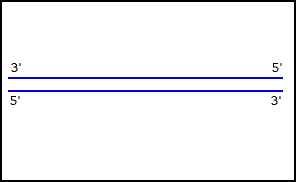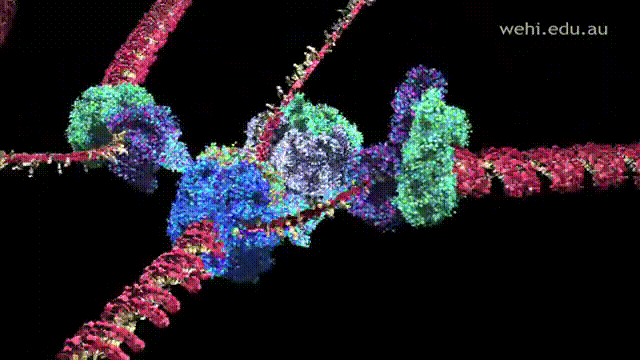 |
 |
Setting: Origin of Replication
Characters: Helicase, Single-strand binding proteins, Gyrase, RNA Primase, RNA Primers, Leading and Lagging Strand, Okazaki Fragments, Polymerase I, Ligase
ACT I: Initiation
- Helicase unwinds the double stranded DNA by cleaving the hydrogen bonds that links the two strands together.
- Single-strand binding proteins (SSBPs) stabilize these single DNA strands and keep the strands separated.
- Gyrase relieves the strain coming from the unwinding process by cutting the DNA.
- As a result, two separated single DNA strands are formed as replication bubble.
ACT II: Elongation
- After unwinding, RNA Primase attaches to DNA and creates RNA primers, which signals Polymerase III to begin replication.
- Polymerase III attaches to the RNA primer and begins the replication process by adding nucleotides to the two parent strands, leading and lagging, in a 5' to 3' direction in a form of replication fork.
- Leading strand is replicated into the replication fork. Thus, it allows the strands to be synthesized continuously.
- Lagging strand is replicated away from the replication fork and anti-parallel to the leading strand. Since strands are replicated away in a 5' to 3' direction, this does not allow Polymerase III to synthesize the strand in a continuous manner. Instead, it is synthesized in short fragments called Okazaki fragments.
 |
- After replication, Polymerase I removes and replaces the primers and replication mistakes with correct DNA sequences.
- Ligase glues and connects the gaps between the Okazaki fragments with a phosphodiester bond.
Video: https://www.youtube.com/watch?v=27TxKoFU2Nw
Notes: All proteins ending with ase are enzymes.


No comments:
Post a Comment